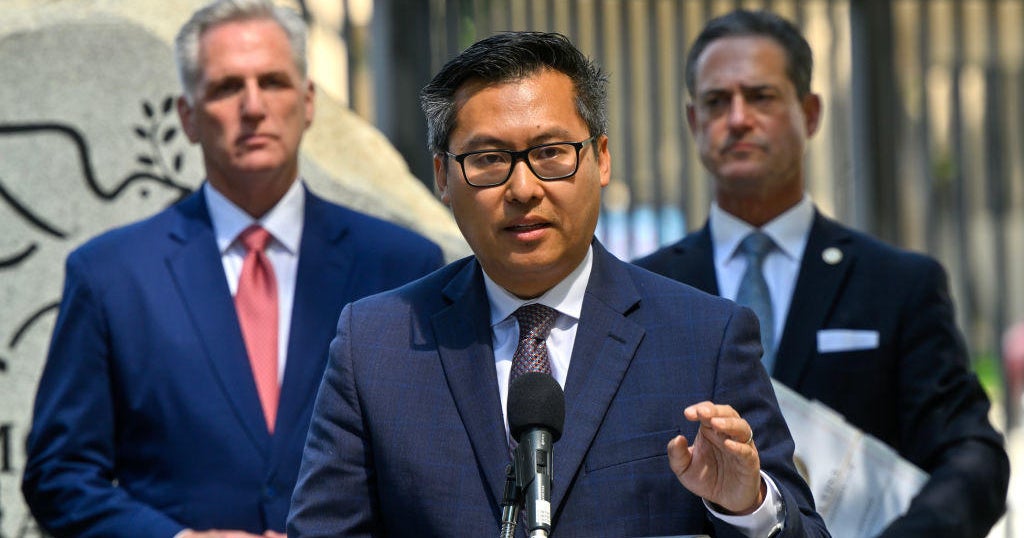Missouri
MU Extension offers new gardening class

KANSAS CITY, Mo. — The University of Missouri Extension is accepting enrollees in a new garden steward program.
The five-week course covers the essentials of beginning a garden and growing your own produce.
The course costs $99, but people over the age of 55 who live in Platte County, Missouri, and register to be an AmericCorps volunteer for six hours per year can take the course for free.
The course began May 18 and ends June 15, but new participants can sign up and begin anytime during the period. The course includes lessons via online sessions and face-to-face, interactive meetings.
“In [MU] Extension, we have impact. That’s our goal, to have impact. To see it, not just in the class, but to see it long term, is very rewarding,” said Tamra Reall, the Kansas City area horticulture field specialist for MU Extension, who teaches the course.
Husband and wife Tony and Connie Riddle, became master gardeners through a similar, yet longer MU Extension course.
They’re happy to know the Extension is offering this new, shorter course.
“Some people maybe don’t have the 10 or 12 weeks to dedicate to the longer program,” Tony Riddle said. “There are going to be more people with the basic knowledge to encourage them to come out and either start their own garden or work part of the master garden program here.”
The Riddles volunteer at the community garden at 18th Street and Broadway Boulevardin Kansas City, Missouri.
On Tuesday, they collected collards and kale which the garden donates to organizations like After the Harvest and Harvesters.
MU Extension has information about the new garden steward class on its website.
—

Missouri
Two Missouri attorney general candidates deny 2020 election result – The Examiner

Missouri
Tornado watch expanded for half of Missouri – Missourinet

Severe weather is again threatening portions of Missouri.
About half of the Show-Me State is under a Tornado Watch that is in effect until 10:00 p.m. Areas under the watch include St. Joseph, Kansas City, Joplin, Springfield, Branson, Lebanon, Sedalia, and Chillicothe.
A tornado watch has been issued for parts of Arkansas, Kansas, Missouri and Oklahoma until 10 PM CDT pic.twitter.com/ZoBMvoANSU
— NWS Springfield (@NWSSpringfield) May 21, 2024
The National Weather Service reports that a few tornadoes are likely, along with scattered hail up to softball size, with scattered wind gusts of up to 75 miles per hour. Prepare to take action if watches and warnings are issued for your area.
A Lake Wind Advisory is in effect for portions of southeastern Missouri, except the two Bootheel counties, until 6:00 p.m.
Copyright © 2024 · Missourinet


Missouri
Legislative interns help Missouri school districts claim over $1 million in federal funds • Missouri Independent

In March, the phone in state Rep. Deb Lavender’s office in Jefferson City started ringing constantly, but the calls weren’t for her.
They were for her interns, Santino Bono and Alanna Nguyen.
The interns, along with Dylan Powers Cody, who was interning for state Rep. Peter Merideth, had spent months cross-checking spreadsheets to pinpoint school districts who had not yet claimed pandemic-era federal funds for homeless students.
Those federal dollars are part of the American Rescue Plan and must be budgeted by September. A large part of the interns’ project was calling districts to notify them that they had money that could expire if they didn’t act quickly.
The office got so many calls back from schools about the interns’ project that Lavender’s legislative assistant needed to create a voicemail folder just for them.
So far, they helped districts claim $1.15 million in funds in four months that can be used for a range of services for homeless students — from buying washers and dryers to temporary hotel stays and transit cards.
“We had multiple school districts call back and say, ‘We have twenty grand in the bank that we can use to help homeless students? No one really told us,’” Bono said in an interview with The Independent.
Most of the districts the interns reached had no idea they had funding available, Nguyen said.
“Then, they wanted more information on it,” she said. “Once they got the information on it, they were able to kind of kickstart it up and get things moving along.”
Bono expected the internship might be more menial, including the “intern trope of having to get coffee for people,” he said.
“To know that I could have potentially a much bigger impact on actual students, as a student myself, I’m really proud of that,” Bono said.
Missouri received an infusion of $9.6 million in the American Rescue Plan Act of 2021 for students experiencing homelessness, and schools were able to start using it in 2022.
But many of those schools had never received federal dollars to support homeless students before.
Tera Bock, director of homeless education for Missouri’s Department of Elementary and Secondary Education, said the agency alerted school districts to the funding but that several challenges emerged.
“It is not funding that most districts are used to having, so they usually are supporting their students experiencing homelessness without any funding specific to that,” she said. “The extra funding creates the need for a shift in mindset as far as what they provide for those students.”
School districts have until the end of September to budget the remaining $6.1 million or lose out on it.
Most schools received a few thousands dollars in federal aid for homeless students. The largest allocation, based on its homeless student population, went to St. Louis City which received $850,000.
The funding is best used for one-time costs, Bock said, like a vehicle to transport students with housing insecurity or to meet emergency needs.
“The district should really consider how they can use it in a way that is not going to create a financial burden in the future whenever they don’t have the funds anymore,” Bock said.
She said rural districts with a smaller population of students experiencing homelessness are the most likely to struggle to spend the money.
Bock has been in her role for a couple months, and the position was vacant briefly.
Part of her job is to contact each district’s homeless liaison, a position every district is federally required to have. But sometimes, the liaisons have multiple positions in schools, and Bock doesn’t hear back from them.
“Especially in the districts where they don’t typically see a large population of homeless students, they get multiple roles, and it just gets lost in the shuffle,” she said.
“We don’t have very many (districts) here in Missouri where that person is completely designated as their entire job for the most part,” she said. “They are wearing lots of different hats.”
Bock said she sends “lots of communication,” so “they should be aware” of the funds but wonders if liaisons are properly connected to district administration to get the money budgeted.
With more communication and activities planned, Bock is not concerned about being able to get more money claimed by districts.
“This is definitely a big piece of what I’m working on right now,” she said. “And our sights are set on Sept. 30.”
Bock said the interns were “super helpful” in the process.
“There has been good communication whenever they need some backup information to support questions that are coming up,” she said. “So they’ve been great to work with.”
The interns are hopeful schools will continue allocating the funds.
“There’s still a lot to be done by September and session’s ending,” Bono said. “I’m going off to law school. I can’t keep calling school districts. So we’re just hoping that more awareness can be given to school districts to kind of get them to keep working towards this.”
Lavender said the funds might look modest in terms of the state’s overall budget but the impact on students is large. In Webster Groves, she said, the schools “got another $8,000 that I don’t think they knew was sitting there.”
Lavender’s legislative assistant Dustin Bax chimed in: “And $8,000 of backpacks, non-perishable foods, fuel cards — that goes a long way.”
GET THE MORNING HEADLINES DELIVERED TO YOUR INBOX
-

 News1 week ago
News1 week agoSkeletal remains found almost 40 years ago identified as woman who disappeared in 1968
-

 World1 week ago
World1 week agoUkraine’s military chief admits ‘difficult situation’ in Kharkiv region
-

 Movie Reviews1 week ago
Movie Reviews1 week agoAavesham Movie Review
-

 World1 week ago
World1 week agoCatalans vote in crucial regional election for the separatist movement
-

 Education1 week ago
Education1 week agoVideo: Protesters Scuffle With Police During Pomona College Commencement
-

 News1 week ago
News1 week agoNevada Cross-Tabs: May 2024 Times/Siena Poll
-

 World1 week ago
World1 week agoEU's divided right wing can disrupt if it finds greater unity: experts
-

 News1 week ago
News1 week agoControlled demolition planned at Baltimore bridge collapse site


















